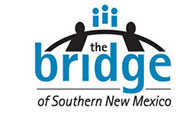Connecting People with Great Jobs is a Group Effort
As published in the Las Cruces Sun-News
Doña Ana County leads the state in mapping out holistic career pathways for people to find their way to well-paid careers right here in our community and for mapping the relationships between our education, workforce and business communities to work together to propel people toward success.
In fact, our career pathways, which you can find at NewMexicoTrueTalent.org are now being replicated in our state and even adopted by the state of Wyoming…high praise for our community!
Sector Strategies which build on these pathways to mobilize workforce-building investments to support businesses and job seekers in specific industry sectors, are a top priority for the state.
The Department of Workforce Solutions and the local resources allocated to our community through the Southwestern Area Workforce Development Board and Workforce Connections offices are key players in this effort. Each year, millions of dollars flow to our Southwest Region to support adults, youth, and those who have become unemployed or are underemployed connect to employment, job readiness, and education and training, as well as the businesses who can financially benefit from the resources of this system.
In July, the Southwestern board received a new annual investment of $5.5 million of the state’s $26 million statewide, adding to their unspent funds from the previous year of $3.5 million as of May 31.
Sector strategies help the Workforce System optimally invest these dollars in partnership with education (public ed, higher ed, and other training providers) and point them toward employment and good earning potential in business and industry and economic development in key industries that drive change in our region.
Clearly, one of our most vital industries is healthcare. How do we help some of the 7,229 job candidates in Dona Ana County today, as well as those who are in school now, be ready to step into many of the 5,000 jobs in this industry statewide? Not just doctors and nurses, but the holistic set of jobs in healthcare, like maintenance and business office and food service support staff in addition to medical assistants, technicians in a host of medical fields, and the higher skilled nurses, nurse practitioners, physician assistants, and doctors.
Thanks to a statewide data analysis from the Department of Workforce Solutions, we can quantify where some of the best opportunities are in healthcare – where employment is most likely for those who with the right knowledge, skills, and abilities. Those skills include “employability” skills like problem solving, good customer relations skills, reliability, and working well with others in teams.
Those with a high school diploma or some college could qualify for jobs like:
- Medical Secretary – $19,890 – $25,060
- Billing & Posting Clerks & Machine Operator – $20,360 – $27,870
- Pharmacy Technician – $24,640 – $30,690
- Social & Human Services Assistant. – $25,310 -$32,490
Those with the right college-level career certifications could qualify for:
- Medical Assistant – $22,000 – $25,490
- Medical Records & Health Information Tech – $21,270 – $29,060
- Phlebotomist – $24,320 – $31,230
- Emergency Medical Technician – $28, 950 – $39,740
Associate-degreed candidates have great employment opportunities in:
- Physical Therapy Assistant – $18,940 – $29,880
- Radiologic Technologists and Technician – $43,540 – $55,020
- Diagnostic Medical Sonographer – $43,010 – $74,260
- Respiratory Therapist – $47,110 – $63,740
And the industry needs a slew of bachelor-degreed candidates in areas you may not think of:
- Accountants & Auditors – $36,110 – $52,200
- Software Developers/Applications – $40,130 – $60,180
- Network & Computer Systems Admin. – $43,230 – $65,580
- Nurses (of course!) – $48,050 – $67,080
Each of these jobs are projected to be either stable or growing from now until 2026. Current openings for these jobs in our state range from 21 (medical secretaries) to 4,552 (nurses).
As our region begins to better connect almost $9 million in federal investments to careers and jobs in key industries, the better the employment and family income looks for our people – so they don’t leave because they believe “there are no jobs here.”
And just as important, we generate strong pools of well-qualified talent our healthcare industry so desperately needs. Why? So they can provide the best level of care to the people they serve – us – and play a critical role in the quality of life of our community.
Truly, a win-win for us all!

